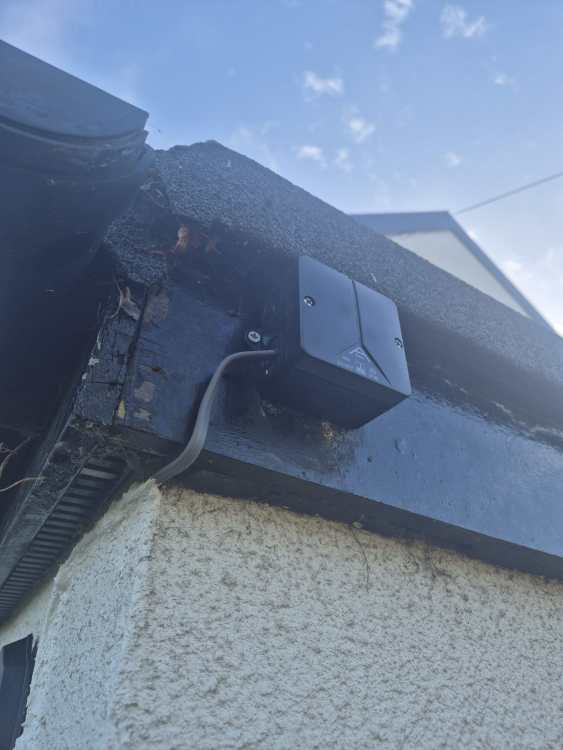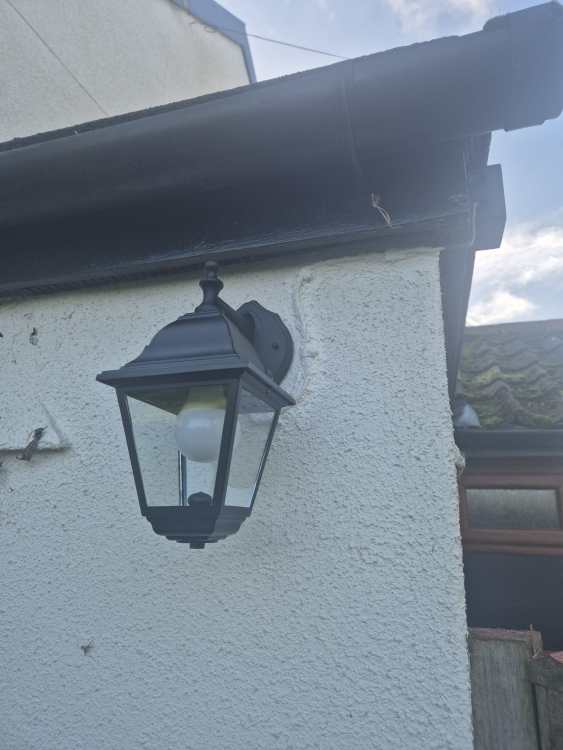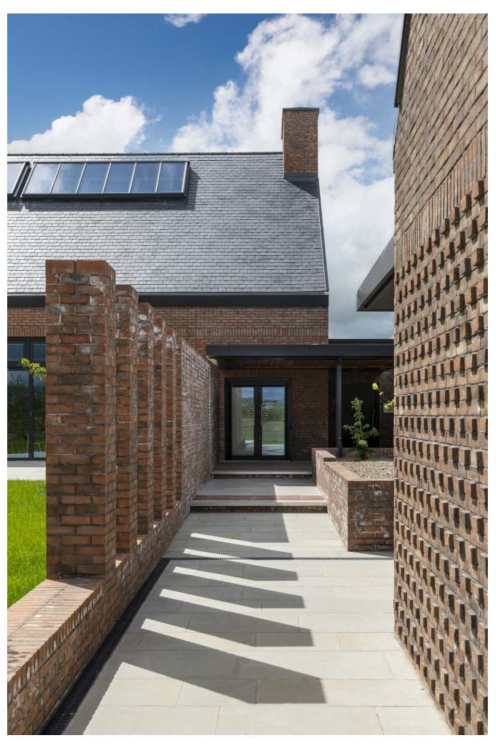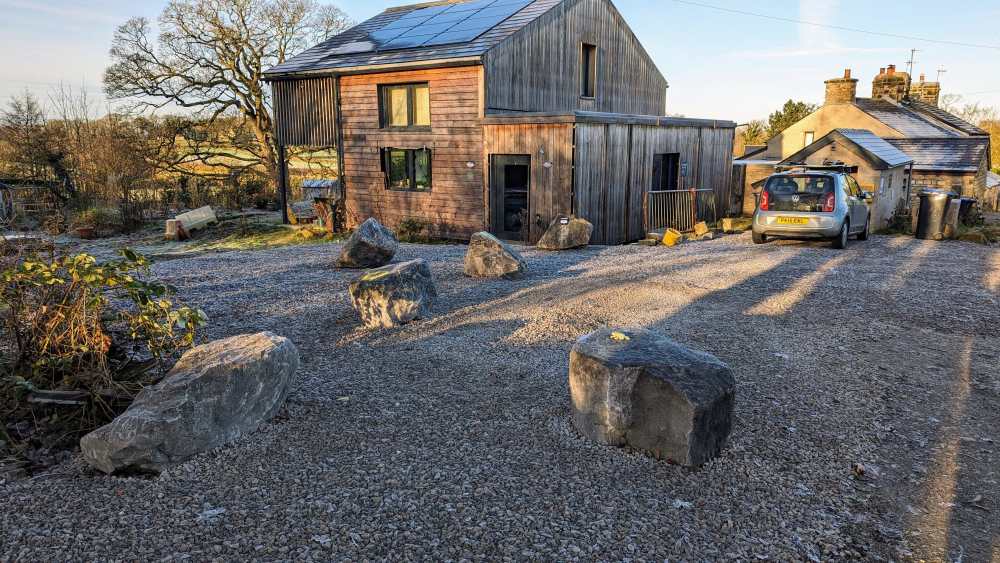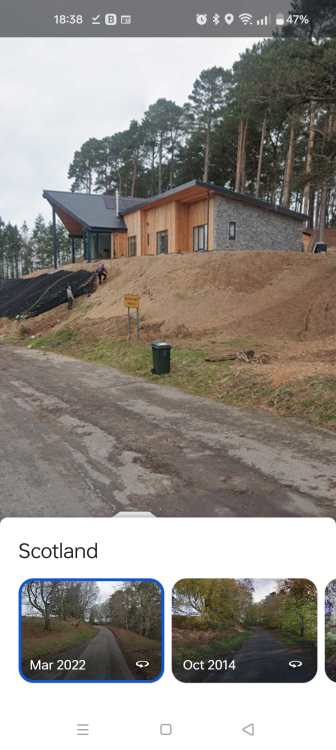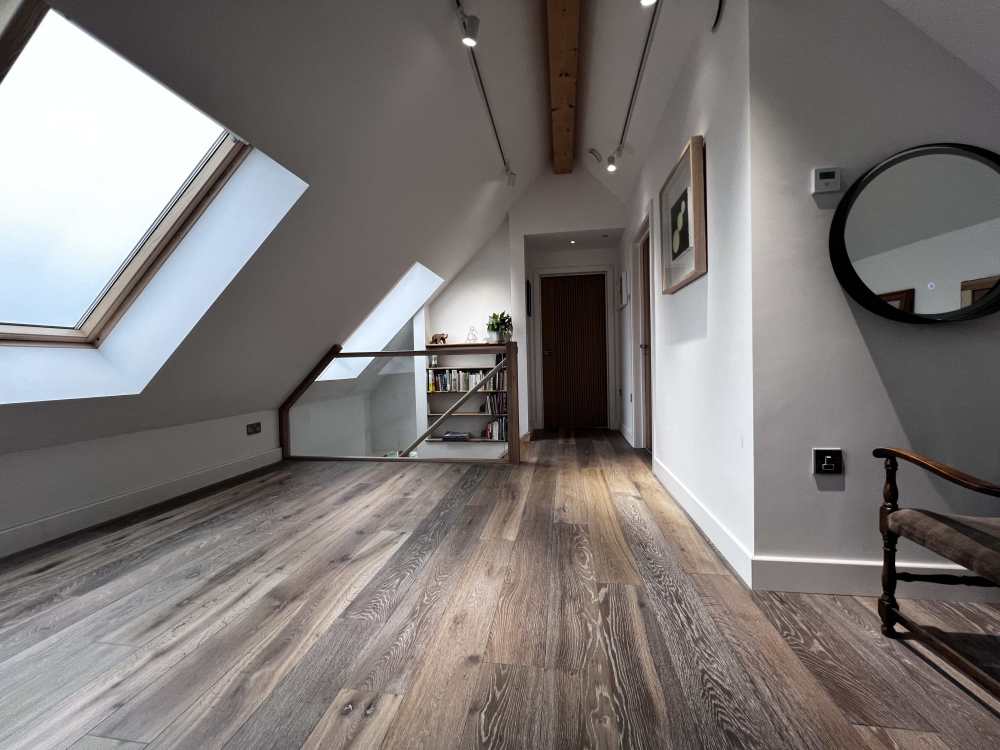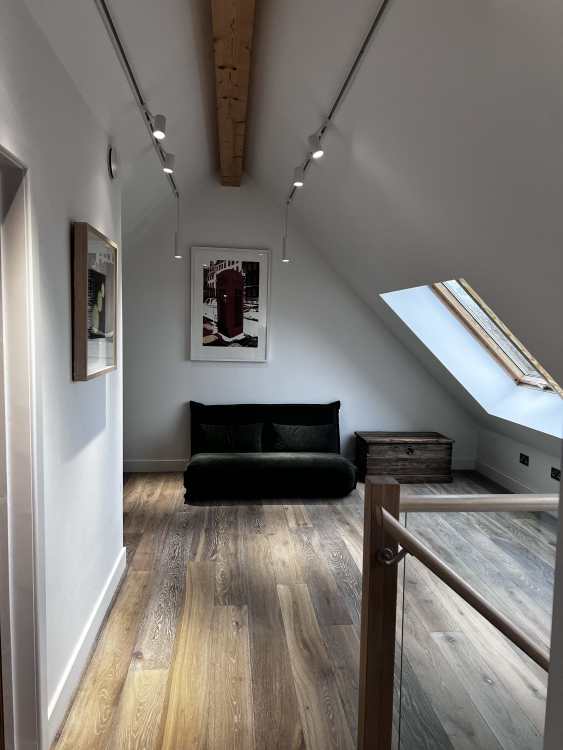Leaderboard
Popular Content
Showing content with the highest reputation on 11/11/24 in all areas
-
Have you thought about putting integrated PV on your roof. That way you will only have a few tiles to fit around the edges, on the sunnier side. Will get some electricity as well.3 points
-
2 points
-
Surely not. The heat loss starts at the internal face. Extra thickness is effectively added to the outside face and does not increase effective areas of losses. The heat loss programs may say otherwise but be wrong. As I've said before, I've met some of the BRE people, and discussed Sbem and BREeam and they didn't understand much about reality, or want to discuss problems.2 points
-
1. Are they architects? 2. Do you have a contract with them? 3. If you do - what does it say about issues you are experiencing? 4. If you don’t - they are probably in violation of several codes of conduct. 5. Check with your mortgage company - a JCT Completion Certificate may be irrelevant - a BC Completion Certificate is more likely to hold more weight. 6. If they are ARB and RIBA members and you are not happy with the service make a complaint. 7. If your mortgage company require some sort of guarantee speak to the NHBC.2 points
-
First saw this site when researching info for installing velux roof lights in a new corrugated roof and then when trying to find out how to insect screen board on board siding. Thought it was time to join up and maybe add my 2 pence worth. I'm in the process of making an oak timber frame (mortice and tenon post and beam) to be a room in the garden. At the siding stage.1 point
-
https://www.carbonbrief.org/factcheck-18-misleading-myths-about-heat-pumps/1 point
-
I'm currently fitting Catnic Urban to our roof, which has a 5 degree fall. I have nothing to compare it with, and obvously can't comment on longevity. But the coating has a reassuring, appearance; as if it is lightly embossed with a pimpled roller, and seems very thick. The steel is much sturdier than I expected, and the panels click together very securely and look fantastic on the roof. Apart from the look, we were drawn to Catnic by the excellent sales service, with an online estimator, which includes delivery. Despite being in north-east Scotland, delivery was possible and a kit arrived, including every last item needed to fit the roof, for around £8500 before VAT. The only negative is that obtaining information about fitting it was tricky, although a training day in Wales is available. We struggled to find anyone locally who would fit it, but as advanced (in experience and years) self-builders we've found that getting the 8.5 metre panels on the roof has been the biggest challenge. I'll try to remember to get some images tomorrow.1 point
-
@flanagaj, my standpipe was the first step in my plumbing journey. This is what I ordered to satisfy the Anglian Waters stand pipe requirement Polyfast 32mm to 25mm Reducer https://www.bes.co.uk/32-mm-x-25-mm-polyfast-mdpe-reducing-coupling-compression-9859/ Brass Stop Cock - 25mm MDPE to 15mm https://www.bes.co.uk/brass-stop-cock-mdpe-x-copper-25mm-x-15mm-10484/ JG Speedfit Tee https://www.bes.co.uk/jg-speedfit-push-fit-tee-15mm-7080/ Brass drain cock 15mm https://www.bes.co.uk/drain-cock-type-a-15mm-brass-21822/ Brass Double Check valve 15mm https://www.bes.co.uk/double-check-valve-non-return-15mm-dzr-8151/ 90° tape connector elbow https://www.bes.co.uk/1-2in-bsp-x-15-mm-bent-tap-connector-jg-speedfit-push-fit-7090/ Brass Bib Tap 15mm https://www.bes.co.uk/hose-union-bib-tap-1-2in-9317/ I also had to get tools, a piece of 15mm barrier pipe, piece of 25mm MDPE pipe, pipe inserts for 15mm, 32mm and 25mm. There is a very good thread on here already, which I based my purchases on, I will try to find it. *Edit here they are:1 point
-
We were in 23 months before sign off and a further 2 1/2months for VAT reclaim, they paid everything with the old system. I think they have changed it to 6 months after building control sign off not move in date.1 point
-
So he lets the generator run in a shed/garage without proper exhaust extraction. What a twat.1 point
-
1 point
-
Yup, they would have known about the paternity stuff roughly 9 months in advance...?1 point
-
+1. Maybe get a rudimentary bill of quantities done, to show the lender that you have your side in check eg that you know the actual costs required to get to a completion certificate. All you need here is the BCO’s sign off, architects are being dicks.1 point
-
Because this is a renovation and extension you will not need a new build structural warranty or professional consultant certificate. You will need a completion certificate from Building Control. If you need funds, apply for the renovation mortgage now as it will take time to get finalised. Even the property as it stands has some value. You mortgage lender will want to know how much the project will cost to complete and may ask for further figures and information.1 point
-
I have a bunch of Reolink cameras. All good except for one that I dropped - and I mean to take that one apart sometime to see if I can fix it. My latest acquisition on a whim was a 'Go Ranger PT' for the plot - there's no services there atm. Battery and solar panel and 4G and pan and tilt. The battery seems to be held up fine by the solar panel, pan and tilt covers the whole plot (I was thinking I might need two) and the recognition of cars and people is very good. Modern day magic if you ask me. I took care to check the best provider for 4G signal and bought the camera when there was a special offer.1 point
-
Similar to passivhaus. It uses external surface area which tends to overestimate heat loss. It's one of the reasons that smaller houses struggle to meet the standard. Back to straw. I can see almost zero people advocating for structural straw bale houses but rather as an infill for a timber frame as insulation. The issues isn't the straw. Straw is fine. I've already linked lots of examples. It's the bales. They were designed to be able to package, transport and store a useful farm material and are full of compromise for any other purpose. Building a house out of them makes little more sense than making a house out of these just because they're made from polystyrene.1 point
-
Sure, there are a few self build insurance companies depending on your location. This is separate to the mortgage life insurance though as far as I'm aware, at least in my case. I had to shop around quite a bit but google and you'll find a few - they'll need details to apply and see if they will quote / cover you depending on the specifics of your build. Some of the big insurers do this and there are other specialist insurers or you can go through a broker.1 point
-
Get rid of the blown in mineral wool in the cavity and replace with EPS blown beads. Create an airtight layer by parging or applying a membrane to the external walls. Seal every penetration, windows doors, joist ends, wires and pipes to this layer with tape or airtight paint. Seal the walls to the floor also and ceiling. You'll need to return your airtight layer to the internal abutting walls too to prevent air leaks passing through them. Batten out the walls for a service cavity. Once all your wires are in place install 50mm mineral wool and then plasterboard and skim. Ensure you have some mechanical ventilation somewhere. MVHR is the best but often impractical in retrofits. Something like dDCV might be preferable.1 point
-
1 point
-
I worked on a straw bale house build near me. But the straw bales were for insulation not structure. It was basically a larsen truss style timber frame with the gap between the inner and outer sections of the larsen truss matching the bale size and the bales were stacked up in there forming the wall insulation. Issues I recall, they were very lucky to get a dry enough spell once the straw was cut for it to dry and then be baled. they had trouble finding anyone with a working small square baler, most farms bale as very big round or square bales now. And then renting a barn to store the bales under cover until they were ready to build them in. Imho all it did was add complication and cost and made the finished walls very thick. Just so the builder had a cosy notion he had a "natural" material. He could have achieved the same building performance at lower cost and with thinner walls using some variation on mineral wool like Frametherm,1 point
-
and should be used as animal bedding, not to build houses in a very wet and windy part of the world there is a reason why they built crofters cottages from stone when they did not have the mechanical means of moving heavy objects easily 2-300 years ago and it is why a lot of them are still standing us it to build an insulating inner wall by all means but not as an outer weather shield Who said anything about using it as an outer weather shield? This isn't the 3 little pigs 🙂 There is plenty of straw for bedding - using the excess for embodied carbon reduction in new homes is an ideal use for the rest. At the moment - as I understand it - most of the excess is burned to make power, which is nuts. Back in the day an exciting - but unpleasant - job was to help with burning the stubble fields to create biochar to be ploughed back into the ground. This is, (rightly) no longer allowed so all straw is now a low-value waste product of producing food crops. The farmers buy back the 'biochar' from power production at inflated values to perform the same function they used to achieve for free, (barring labour costs and the odd visit from the fire brigade). I agree that using stone for the outer face of the construction makes perfect sense in this location due to the weathering; if quarried or recovered locally it makes for an excellent low-embodied carbon building material. Crofters cottages were often insulated, (inside the stone!) with wool or heather - they made use of what was easily and cheaply available. [That’s why they built with stone. If they’d had bricks or abundant timber they would have used that instead] A friend of mine stayed in a cottage on the coast in Norway that was renovated using some of the original wool which was still in perfect condition after 80-odd years. No reason to assume that any other natural material,(suitably protected) wouldn’t last as well. I doubt if fibreglass or PIR would be suitable for reuse in the same circumstances. I do agree that we should be looking carefully at the chemicals sprayed on crops that become insulation – but this applies to crops in general. Industrial farming commits a lot of environmental crimes in terms of chemical use – but compare this to insulation produced by the chemical companies. Most VOC will dissipate naturally in storage before entering the building and the remainder will be effectively locked away from inhabitants behind the surface finishes. I’d rather have this slight risk in my home compared to the toxic soup of chemicals used by unnatural insulations. We have hijacked this thread and I don’t want to get into the weeds about the health benefits of natural, breathable, [not the best term but it’s the one people understand] construction materials. This discussion is about the suitability of straw for the OP’s use and I haven’t seen any logical arguments presented to preclude its use in a properly considered and constructed building in his location.1 point
-
@saveasteading I can’t remember the precise details but I recall the battens being approx 28 x 35. The panels were made up in a workshop so I’m not exactly sure how they were kept straight but it was furniture grade timber. The subframe was a ladder frame at around 450mm centres and the battens were double pinned and made good with wax at the same centres. The battens were left the oversail by 450, 300 and 150 mm to ensure a staggered joint and those were then pinned to the next panel etc. The reveals were a veneered mdf board. The timber was bought as soon as we got the design through which was then delivered and left to acclimate in the workshop for 3 months. This ensure we could select the most true lengths and so that we had timber from the same trees and area to ensure a uniform colouring. The cost was £€$¥ but the finished product was 🔥 The brickwork outside was almost as impressive… the eflourescence you see on the columns has gone now. The photos were taken professionally for Benchmark architects the lead designer. I forget who the engineers were. The project was for Hambleton district council in North Yorkshire. One of those jobs you’ll always look back on!1 point
-
A lot of NT pathways are made of hoggin. Easy to use and if it sinks a bit you can just top it up.1 point
-
With windows you want quality, with your location go and look at norrsken, they have a new showroom just opening in Bournemouth.1 point
-
1 point
-
Nice @Russell griffiths. Oak CAN look great. Here’s something I did with an architect and a bespoke joinery contractor in a crematorium. The architect gave a concept, I designed a unitised solution, and the contractor fabricated and installed. A softwood frame with acoustic insulation within the frame, wrapped in acoustic fabric with the battens pinned to the frame in staggered lengths (uniformly so the next panel married up) and hung on a unistrut frame to shroud the building steel. Here we had composite panels forming the main roof which was cloaked in slate. The oak was treated with fire rated lacquer for spread of fire along with rated fabrics and mineral wool insulation.1 point
-
I know the feeling. Mind yourself. If you need to get in the door just tank the bathroom well and put off the tiling. It'll work perfectly well. In fact it is often a rather appealing swimming pool blue colour that reminds me of holidays brochures.1 point
-
With everything in life start at the cheapest and work your way up until you get to an acceptable level of quality. If you've handballed the slates and they appear exactly the same just pick the cheapest one. We opted for slightly fancier textured fiber cement slates over plain jane ones. It was only €150 extra for the roof. Shouldn't have bothered.1 point
-
The wording of the condition involves quite a lot more than a marked up site plan.1 point
-
There are many benefits to a sloping site. Not least to assist in our SUDs program. The slope towards that sycamore tree in the background hides a pond. That takes every drop of rainwater from our roof. The slope hides all sorts of small horrors (to be dealt with in due course) and provides privacy and shelter for many. (PS @JohnMo, that's a wonderful build and site)1 point
-
We sculpted out a hill quite a bit more extreme than yours. So anything is possible. Formed out a platform for the house to sit on, moving many thousands of tonnes, but took nothing away from site Retaining walls were done with gabions near the house, and wooden strainers elsewhere (8" wooden posts) A before and after1 point
-
There’s not really a question there, just your observations, and you sort of answered them. Retaining walls, use something flexible, gabion baskets, natural stone, timber, don’t use something solid and inflexible, blocks rendered, concrete rendered. this block rendered white trend is a recipe for old tired cracked retaining walls, but it looks trendy in the world of porcelain slabs and fake grass.1 point
-
Yeah that's just wrong. Should apply the adhesive to the wall and remove excess with a notched trowel held at near 90 degrees to the wall. This maximises the height of the adhesive ridges. When the tile is pressed on the ridges of adhesive spread out filling the valleys so you end up with fairly high % coverage. Not 100% though as that would use up all the depth adjustment available. Some tiles or stone need to be back buttered (as well) with a thin flat layer of adhesive.1 point
-
1 point
-
1 point
-
Don't tell anyone who made their house from ICF......0 points
-
0 points
-
@Stable3 I’ve done a stable conversion with a messy head too! Looking back, there were loads of times where I’d had too much to think (had to plagiarise that great line). It can help to write pros and cons lists for each worry, sometimes the answer will present itself easily. This forum was amazing and saved a lot of time and money. For windows, I went with a local firm for a triple glazed aluminium option: the frames aren’t perfect thermally, but the customer service was good, they came on site to measure up, advise and hand hold. The lead time from the slinky extra expensive ones was long and I didn’t want to get things wrong with the measuring and selection etc. Prioritise sleep hygiene.0 points




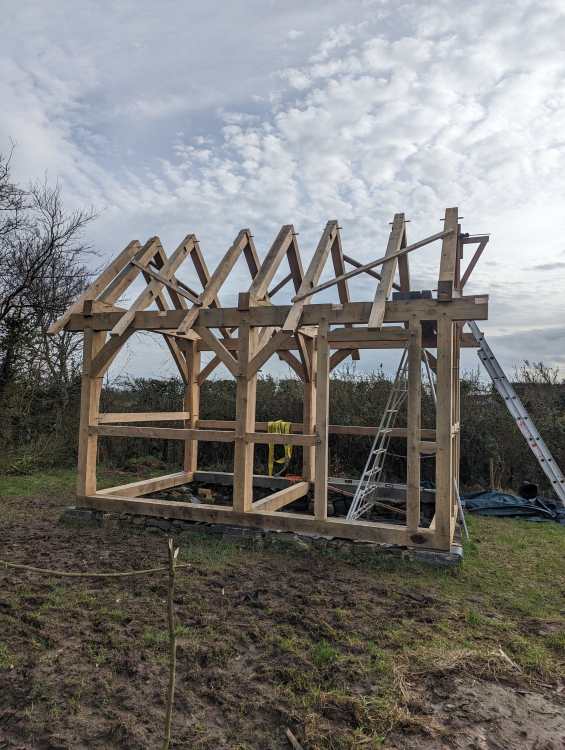
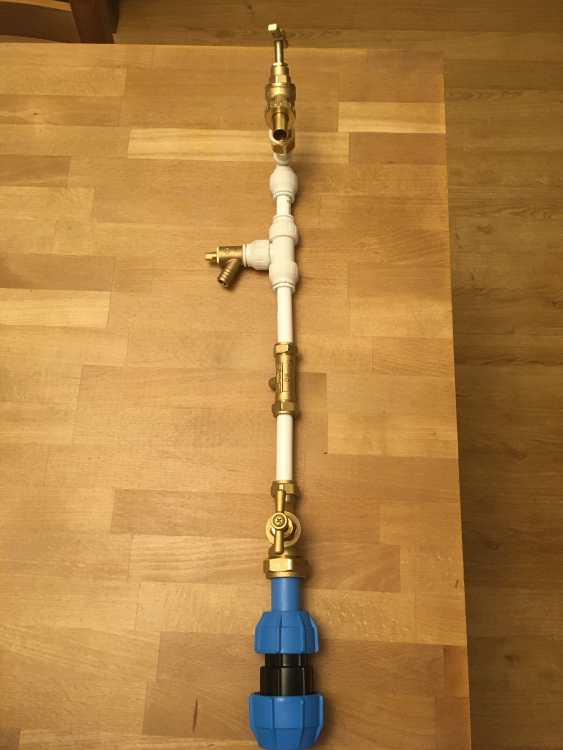

.jpeg.de6d3d799ca6c9c8b5c1b81192a285f3.jpeg)

